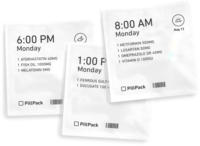In the traditional Onprem software paradigm, a Customer pays the full License Fee of the software upfront and gets the rights to use the software in perpetuity. If he wants maintenance and updates, he additionally pays AMC every year, which is typically
18-22% of the LF. Upgrades are charged separately, as and when they're available.
In the modern SAAS software paradigm, the Customer pays monthly Subscription Fees. That gets them usage rights to the software as well as maintenance, updates and upgrades as long as they keep paying the fees.
In both models, if the software becomes big and famous, customers get bragging rights for being users of the software - but nothing more.
To take an example, I was among the first million users of LinkedIn. When LinkedIn hit 100 million users, I got a personal email from its cofounder Reid Hoffman, thanking me for supporting the professional social network at its inception. I never miss a
chance to namedrop the LinkedIn 1M Club and my membership in it. While that confers bragging rights, it has no monetary value. And, as others vaunt their membership of the same club, even the bragging rights stop being valuable after a time.
Tokenomics changes that.

In the canonical form of Web3 Tokenomics, customers pay money to buy Cryptotoken / NFT ("token") and the vendor uses that money to buidl (deliberate typo of "build") the Web3 app. Tokens grant customers usage rights for the software.
Thus far, Tokenomics is quite similar to upfront license fees for onprem software.
Then comes the innovation: The token is listed in a cryptoexchange. Its value goes up or down depending on the community's belief in the future of the so-called
dApp (short for decentralized application) built by the Web3 startup. If the startup becomes the next Google or Facebook, its tokens will likely go to the moon.
By infusing buoyancy, Tokenomics has revolutionized Web3 software.
Tokenomics pumps up the Web3 software business in five ways:
- Reward for early adoption
- Wealth for idea
- Bonus for spotting early winner
- Boost freemium to premium conversion
- Accelerate VC exit
Let's get into it.
#1. Reward for early adoption
Had LinkedIn rewarded its LinkedIn 1M Club members with tokens, a million people would be sitting on a neat pile now.
#2. Wealth for idea
Over time, I have had a few ideas. Obviously I didn't have the bandwidth to build out all of them. Others did and created blockbuster hits. For example:
PayTM: A wallet where I upload money from my credit card just once a month and use the balance to pay all my monthly balance without undergoing the friction and risk of failed payment caused by two factor authentication for each payment.
LiveTravelogue: When you visit some global landmark (say Eiffel Tower) and others in your family can join you in the excitement via live streaming e.g. Periscope (acquired by Twitter), Justin.tv pivoted to Twitch (acquired by Amazon), Qik
(acquired by Skype).
Uber for Handymen: Press button, get carpenter, plumber, electrician and other handymen in minutes e.g. UrbanCompany, HouseJoy, HomeJoy.
Ring: My new apartment had a videophone. If somebody rang the bell, I could see and talk to them from the videophone. There was no need to squint through a tiny lens on the door to figure out who was outside. I asked myself, with smartphone
replacing camera, MP3 player, scanner, and so many other devices, why can't it replace the videophone. Indeed,
Ring came up with a calling bell that did exactly that. It was acquired by Amazon.

PillPack: Anyone who has provided care for elders would know that there are typically 7-10 medicines to be taken 3-4 times
a day. They'd also acknowledge that it's quite hard to take the meds out directly from their strips each time because, by the time they take out the fourth or fifth tablet, its name is torn away and the strip becomes hard to decipher after that point. As a
result, it's quite a challenge to prepare the exact dose of medicines. I used to crave for a pharmacy that prepared individual doses and shipped them home so that elders can take the meds directly without the need to sort them by date and time. PillPack
is such a pharmacy. The startup was acquired by Amazon.
While I made angel investments in startups executing on some of these ideas, angel investment has geographical limitations and tax considerations that put it beyond the reach of most people. Ergo not everyone who has an idea can profit off
of it.
VCs will tell everyone that ideas are useless, it's the execution that matters. But, if that were really true, they wouldn't be brazenly stealing others' ideas.
The problem so far has been that, without big ticket investments, it's impossible to monetize ideas. Tokenomics solves that problem. If the aforementioned startups had minted tokens when they launched their products, people with similar ideas but without
bandwidth to execute them would have lapped them up. When the startups went on to become unicorns and decacorns, their tokens would have made them rich.
#3. Multibagger returns for spotting early winner
If you love a product, it's human nature to talk to others about it - aka Word of Mouth marketing - and root for its success. If the developer is a public company, you can go one step further and buy its shares in stock exchange. But what if the software
developer is new? Its public listing would be several years away. If you're sure it's a winner, tokenonmics provides an excellent way for you to put your money where your mouth is and profit off of your early enthusiasm for it.
Text Blaze is one such product. This nifty Chrome Extension works like a keyboard shortcut but for autofilling your online content. More at Convenience Needs A Measure. Exhibit A: Text Blaze. As you can see, I'm very gung-ho about the outlook
of this tool. If the startup floats a token, I'd buy a bunch. I'm sure that the software will take off, thus taking the token to the moon and generating multibagger returns for my holdings.
#4. Boost freemium to premium conversion
There are many best practices to upgrade users of Web 1.0 and Web 2.0 software from freemium to premium. I've described some of them
here and here. Typically they succeed in converting 5-8% of freemium users to paid plans.
Tokenomics offers another highly compelling way to convert freemium to premium. With tokens, Web3 software vendors are not only offering rights to use the premium features of the software but are also giving customers the chance to score big gains if the
software becomes a blockbuster. This will undoubtedly raise the appeal of paid plans of software and take freemium-to-premium conversion rates to the next level.
#5. Accelerate VC exit
In the traditional VC investment model, venture capital investors get returns on their investment when the startup raises the next round of funding. That typically happens 24-36 months after the previous round.
By minting tokens at inception, and listing them in cryptoexchanges within the next few months, Web3 startups can help VCs to get exits in 2-3 months.
Tokenomics has revolutionized Web3 software in at least five ways as described above.
Before applying tokenomics to their Web3 software, software companies will need to work through the legalities of issuing crypto tokens and that inevitably varies from one jursidiction to another.
DISCLAIMER: The Web3 / Blockchain world has an eclectic mix of elements like cryptocoin, ICO, token, and so on. Their legal status is ambiguous and swings wildly between various points of the spectrum such as illegal, maybe-illegal, not-illegal and legal,
and from one country to another. Before following through with the content in this post, please consult your legal counsel about their legal status in your specific jurisdiction. We offer no guarantees as to legality of any of the content presented in this
post.